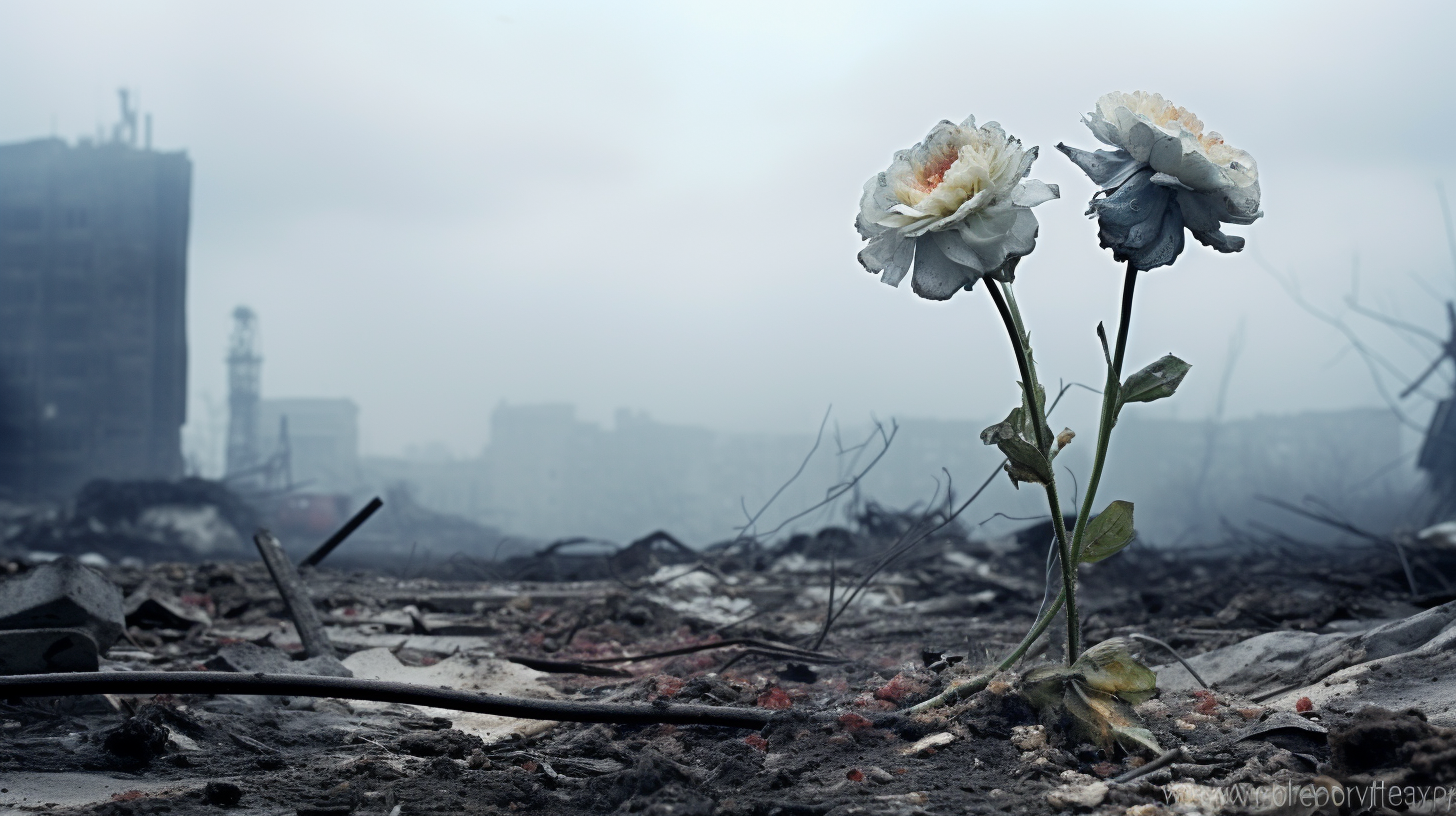In a world veiled by a perpetual toxic mist, the once vibrant spectacle of nature’s artistry now lies in the rare phenomenon we call the Last Bloom. Reminiscent of the solemn tones of ‘Rhapsody of Ruin,’ our landscape is now a canvas of grays, upon which the splash of color from a surviving flower stands as a poignant symbol of defiant beauty amidst decay.
The Last Bloom is not just a rare event; it’s a fleeting whisper of the world that once was. I embarked on a journey through the mist-clad wilderness to witness this rarity—a pilgrimage of sorts to bear witness to the ephemeral floral beauty resistant to the poison that shrouds our planet. The contrast of flowers budding in noxious environments serves as a grim reminder of our failed stewardship.
Through a terrain that suppresses life, I found isolated pockets where nature asserts its flair. In these micro-havens, floral species have adapted to toxicity, morphing into grotesque yet fascinating forms. Their beauty is unfamiliar, hauntingly altered, and their scents are dissonances in the air heavy with chemical odors.
In conversations with last gardeners, those rare individuals dedicated to nurturing these blooms, I discovered an adamantine spirit. They recount their efforts to cultivate and coax life from soil that resembles ash more than the fertile grounds of yesterday. "It’s the defiance of life," one gardener shared, "even as the world fades, we cling to the act of creation, to this last testament of Earth’s once bountiful beauty."
These are flowers you won’t find in any remaining botanist’s guide—mutations borne of necessity, yielding petals of heavy metals and pistils secreting acidic nectar. They are the unlikely offspring of human folly, thriving in secret, uncared-for corners of the planet.
Admiring the Last Blooms demands a resilience of spirit as both the journey and the revelation can be haunting. To stand among the ruins of nature and find beauty is to acknowledge the tragedy of its rarity. And yet, even in these harrowing vistas, humanity’s indomitable hope is evident in our refusal to capitulate entirely to despair. The Last Bloom, then, stands not only as a symbol of stubborn survival but also as a subtle rebuke—a possibility that life, although transformed, might outlast the age of human disruption.
Let us not forget the fade of nature’s requiem, where silence overtook song and concrete suffocated roots. Yet we find the audacious vibrance of life manifesting in these blooms—silent sentinels and poignant memorials to a once-flourishing Earth.
Though the Last Bloom offers no hope for reversal, its existence propels the recognition of life’s persistence. As you finish reading this, somewhere a flower is withering, and another is daring to bud. The future of these blooms is uncertain and inevitably tied to the longevity of the toxic mist enveloping us. But their testimony endures—as a reminder, as a warning, and, against all odds, as a spectacle to behold and treasure.
For now, these blooms exist on borrowed time, unexpected sparks of color in a dull world. Until the mist claims them too, they stand as lonely monuments to past glories, and we, as witness to their final dance.
